Many people have a memory involving Chili flakes. Sitting down at a pizza restaurant, you see the two containers waiting at your table, parmesan cheese, and chili flakes. What may have once started as a double dare is now a part of your regular spice ingredients.
Chili flakes are a common ingredient in many reasons. A little goes a long way to add a spicy kick. But what if you head to your spice rack only to find you don't have any? Not too worry - you have options!
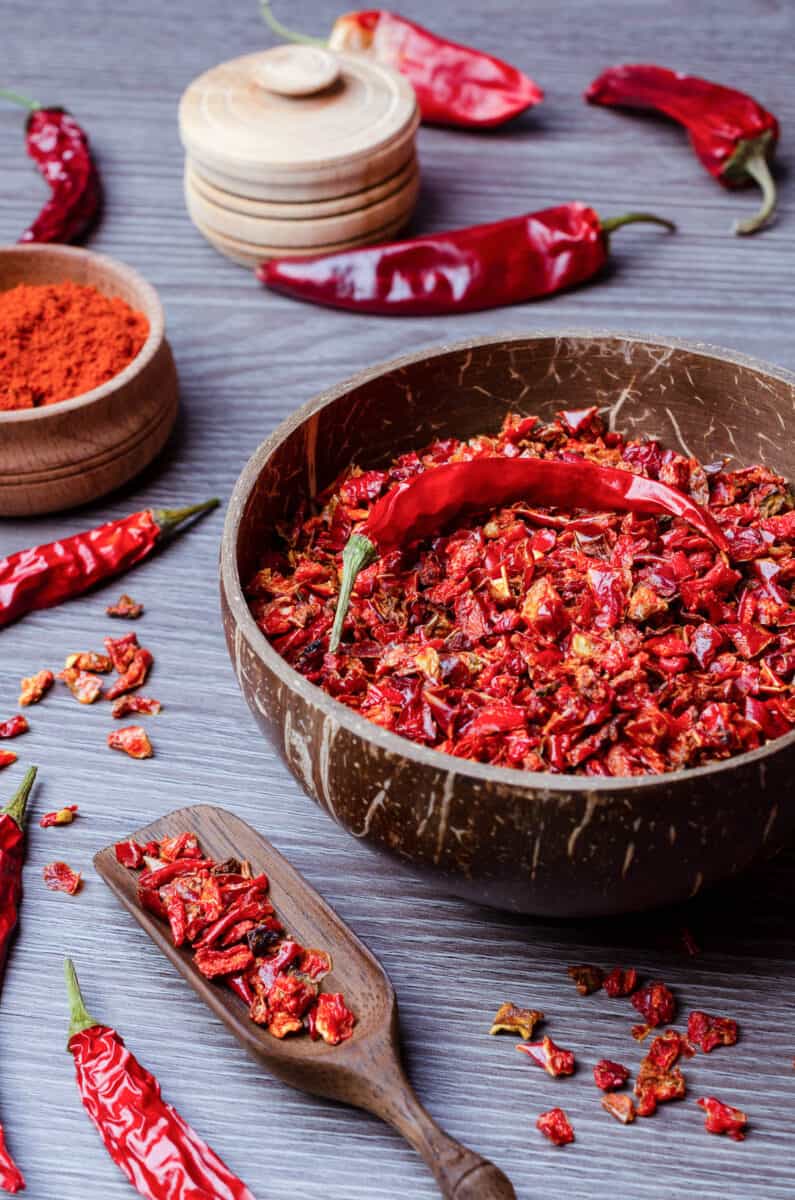
Jump to:
Chile Flakes Background
Chile flakes are made from dried and crushed chili peppers. They are believed to have originated from Southern Italy in the late 1800s. Their popularity aided them in migration to the United States by the 1900s. They soon became a staple at pizza places across the United States.
Chili flakes also have some great health benefits. They can help boost your metabolism and help to suppress your appetite. Chili flakes can also help your immune system. Peppers are filled with vitamins and minerals to help protect you from infection. They are a great addition to any meal.
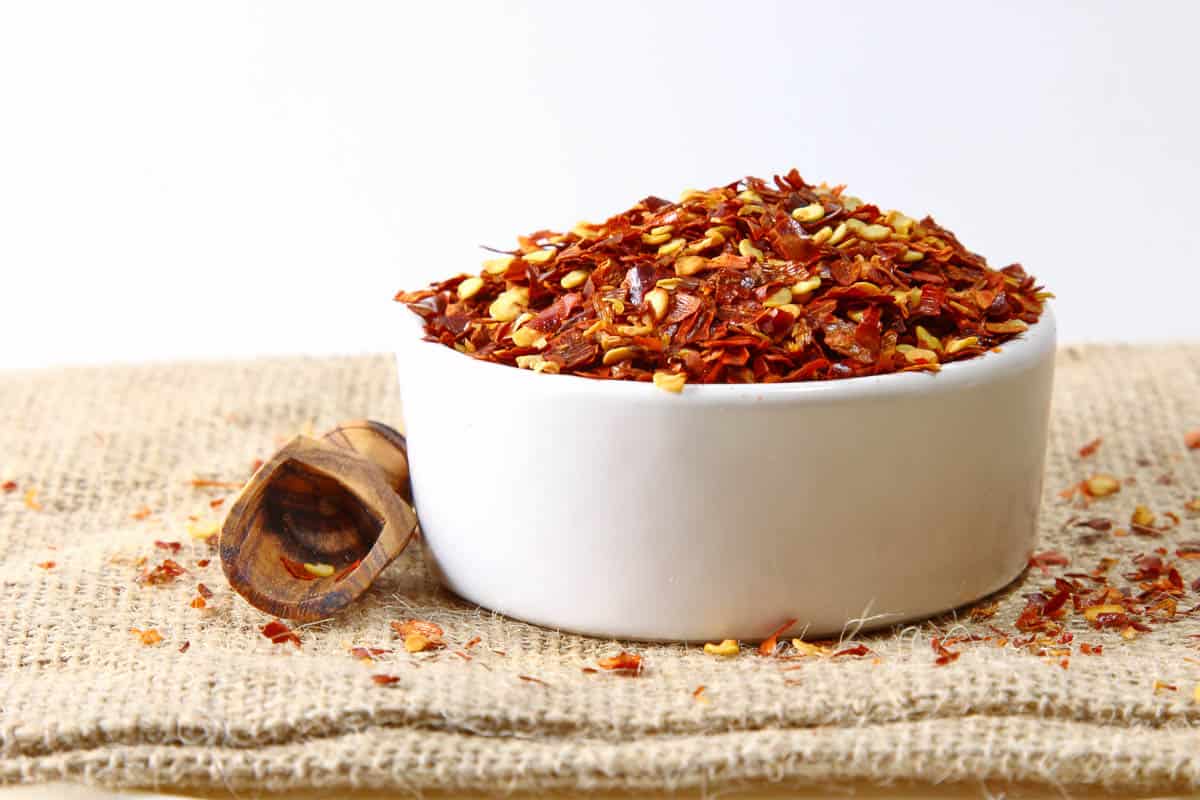
Are crushed Red Pepper and Chili Flakes the same?
The short answer is no. Crushed red pepper and Chili flakes use different peppers.
Red pepper flakes come from a variety of peppers. Bell peppers, Fresno peppers, jalapeno, cayenne pepper, and Anaheim peppers are all included in the mix. The peppers used will vary based on the brand you select. Different types of peppers will create different levels of spice.
Chili flakes are usually made of one type of chili pepper. This creates a specific flavor and spice. The biggest difference is that chili flakes are generally less spicy than red pepper flakes.
What Is the Same As Chili Flakes?
There is no direct equivalent to Chili flakes except for another container of chili flakes. But, there are many great substitutes for chili flakes you can use.
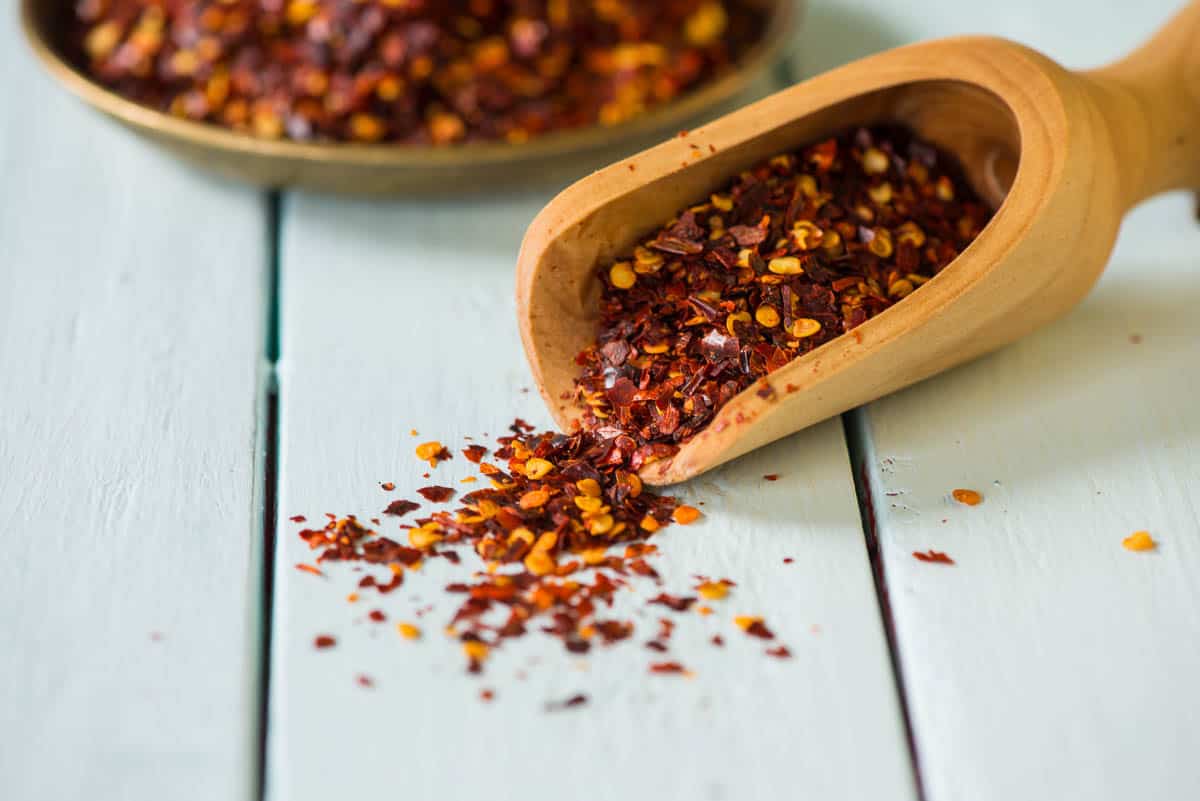
How Hot is Too Hot? The Scoville Scale
The Scoville Scale or the pepper scale helps to rate the heat intensity of different peppers. It is a simple way to measure how hot a pepper is. The test identifies how many times the capsaicin needs to be diluted by sugar water. The higher the Scoville rating is, the hotter the pepper is.
The Scoville Scale ranks from 0 to 2,200,000. For example, the Bell Pepper is rated zero on the Scoville Scale. But, Thai peppers rank 50,000 to 100,000 which is more than halfway up the scale. The hottest pepper on the scale is the Carolina Reaper at up to 2,200,000.
Chili flakes are rated around 35,000 Scoville heat units. They are close to the middle of the scale, but still on the lower end. Spicy, but not too spicy. So, what can I use instead of Chili Flakes? Read below for some great options.
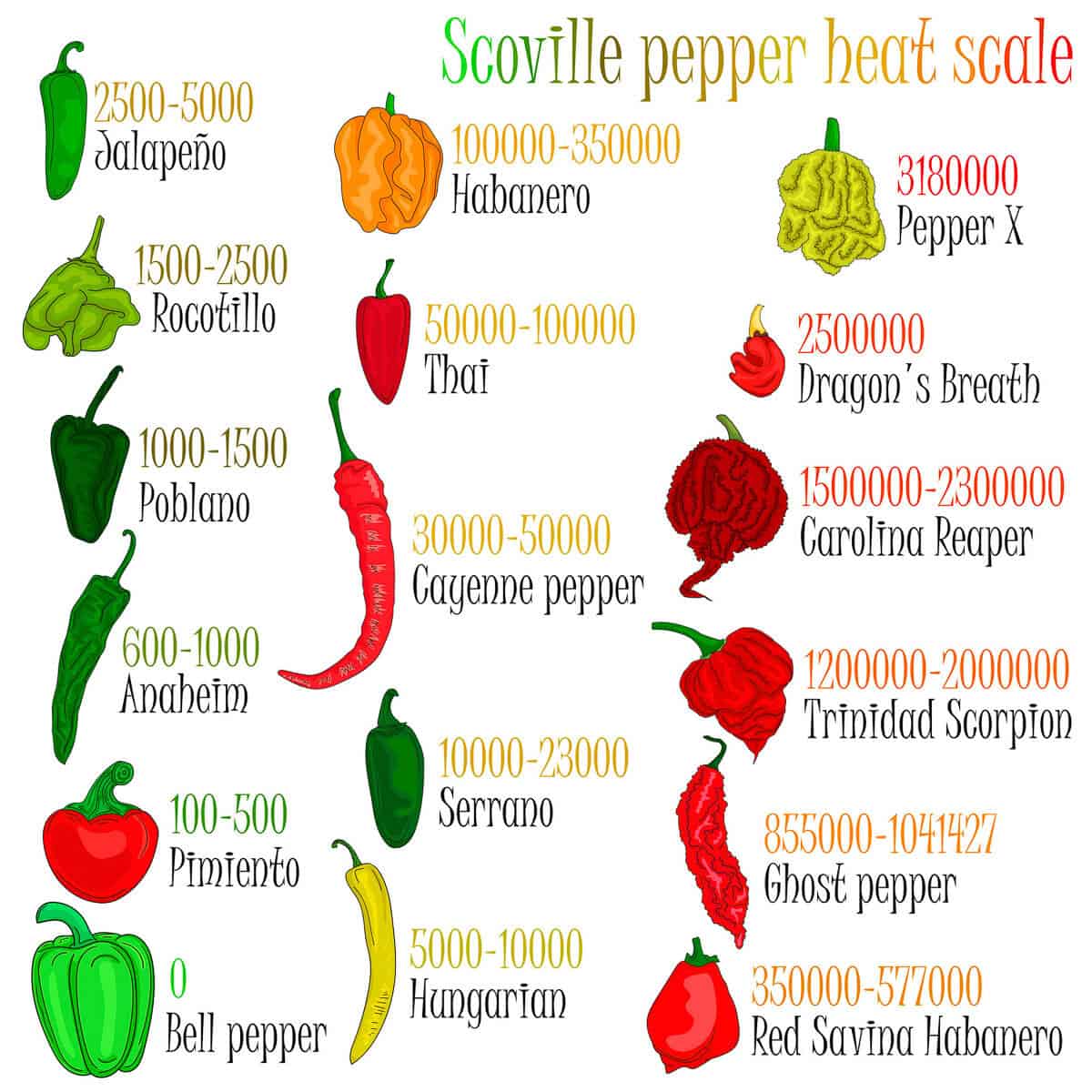
The Best Chili Flakes Substitutes
While it may seem that chilies can just be traded out for other chilies, this is not always the case. Fresh peppers have a much different flavor and texture than dried peppers.
Some chilies are spicier than others. The milder spice you get from chili flakes can be quickly intensified with options such as habanero powder.
A good meal can be ruined with one shake too many. Some brands use a mix of different types of chilies for a specific heat level or flavor.
Cayenne Powder
Cayenne peppers come from South America. They are skinny, red, and have a semi wrinkly skin. They are a popular spice in many cultures. You can find them in Creole cuisines. They are also highly used in many Asian cuisines such as Thai, Chinese, and Korean.
Cayenne pepper powder is similar to red chili flakes because it is not cut with other chilies. The spicy cayenne pepper is about ten times hotter than a jalapeno.
So it is important to substitute ground cayenne pepper with only half of the amount you would use in chili flakes. Keep in mind, that you can always add more spice to a dish but, you can never take it away once it’s there.
A Cayenne pepper substitute will add a spicy taste to your pasta sauces. Bringing a spicy flavor to family favorites is a great way to switch things up. Use it in your spaghetti sauce to bring a bit of heat to your taste buds.
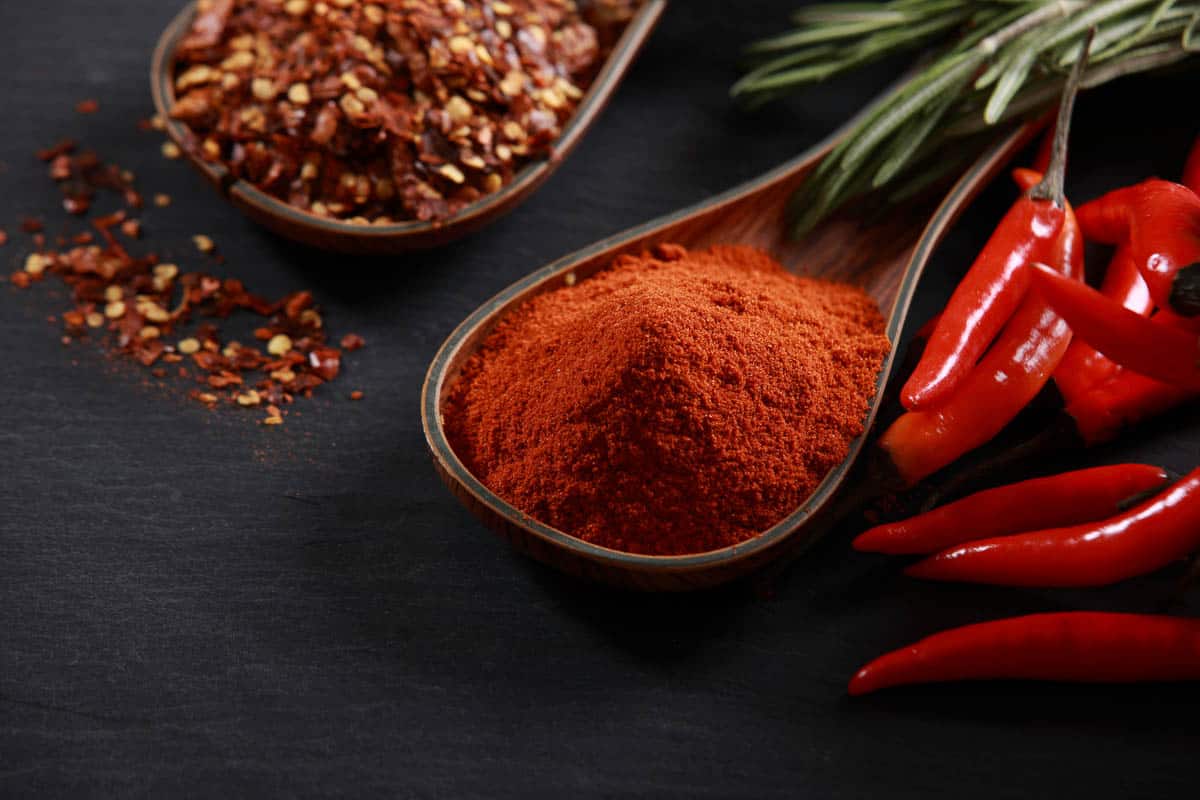
Chili Powder
Chili powder is a dried and grainy seasoning from one or a variety of chili peppers. It was invented in Texas in the 1890s.
Some brands include additional spices such as cumin, garlic powder, or ground oregano in the mix. It is usually red in color and between 500 and 1,500 on the Scoville scale.
Some chili powder brands will have a darker color. You can expect these selections to have a smoky flavor.
Many ask the question, “Can I use Chili Powder instead of Chili Flakes?”. Yes, you can! Just be sure to start with an equal amount of chili powder as chili flakes until you reach your desired level of heat.
Chili Powder is regularly used in cuisine such as Tex-Mex. It is a good substitute for Chili flakes due to its lower heat level. Try Chili Powder as a replacement for chili flakes in dry rubs or a pot of chili.
Another popular option of chili powder is Gochugaru. Gochugaru is popular in Korean cuisine. The Gochugaru substitute is made of ground Korean chili powder. Gochugaru can also be in the form of Korean Chili flakes. This is an easy substitution for regular chili flakes.
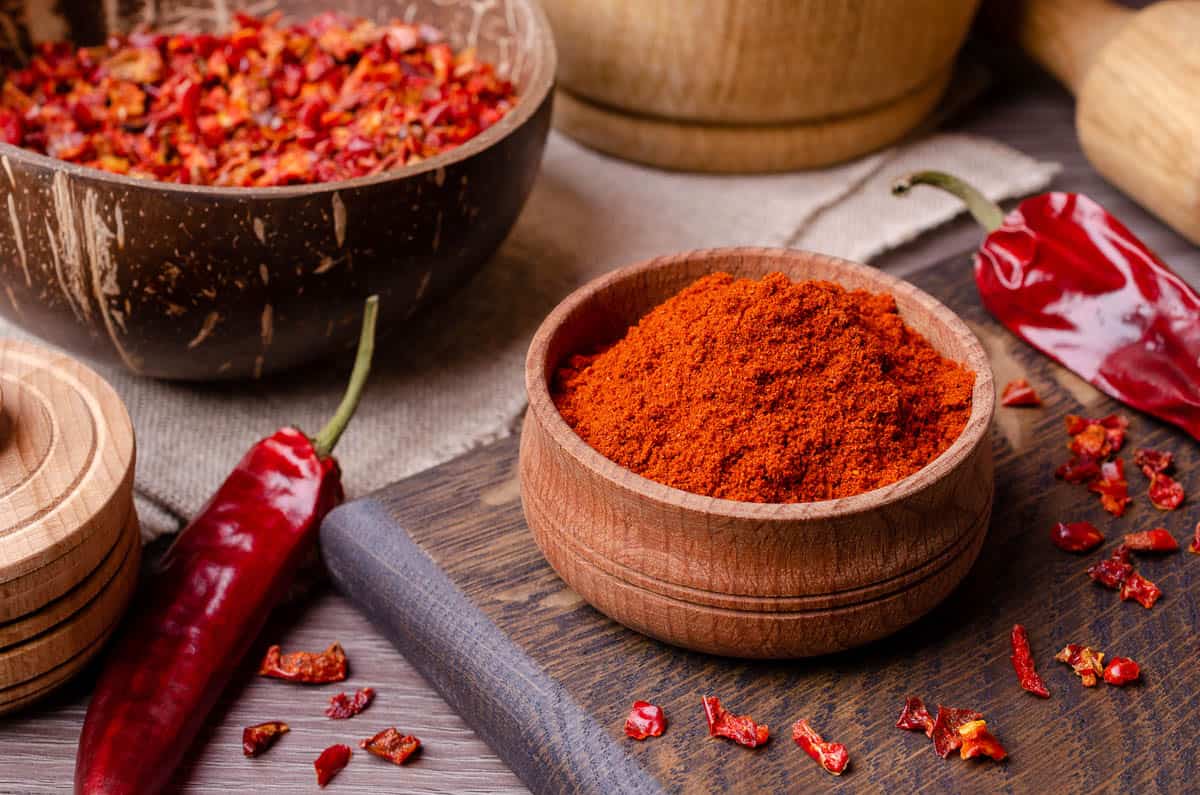
Chili Paste
Chili paste can be a good substitute choice. But, chili paste can vary in different heat levels based on the type of chili used to make the paste. It is important that the chili paste you use is similar in heat level to chili flakes.
Chili paste is one of the best alternatives to chili flakes in soups and stews. When substituting, be sure to consider the type of chilis used in the paste. For example, if your chili paste is made from Anaheim Chilis, you may want to use a 2:1 ratio in the amount of paste as you would chili flakes.
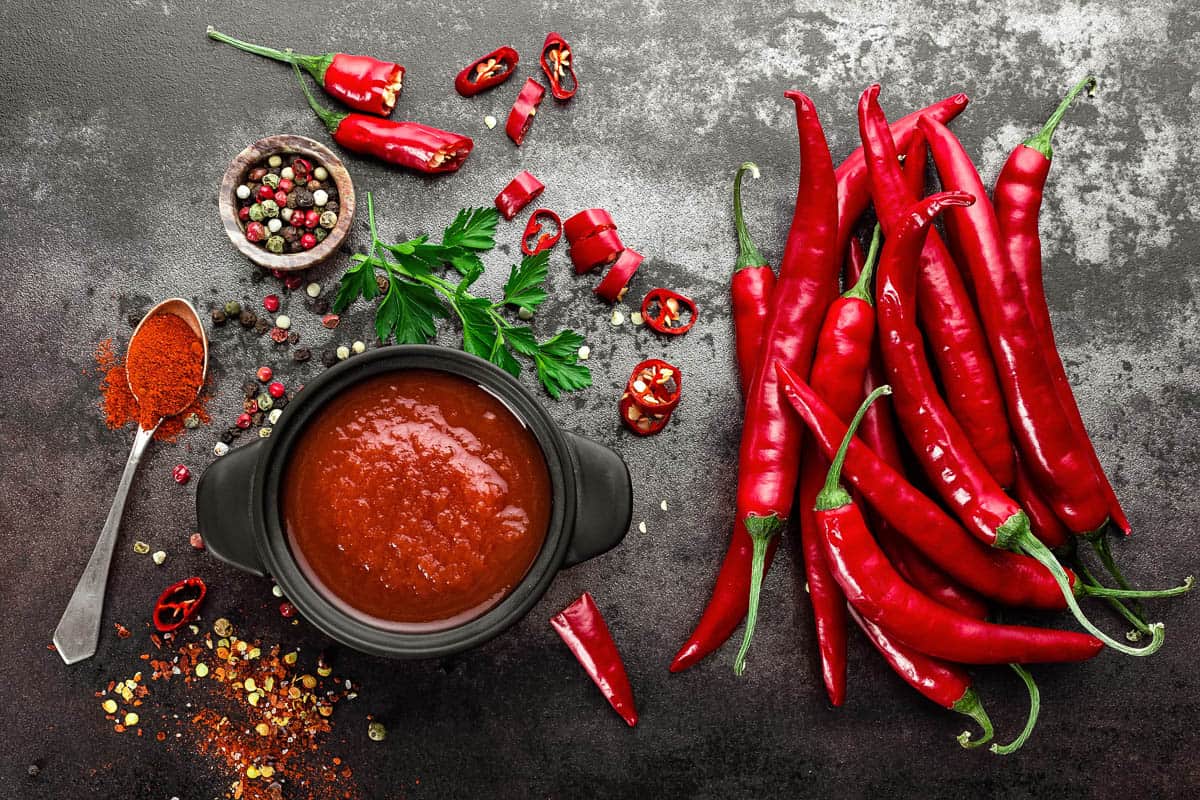
Hot Sauce
Hot sauce is one of the best substitutes for chili flakes when making spicy dishes. There are hundreds of different varieties available at your local grocery store. You have a wide variety of choices depending on the level of hot, flavor, and type of pepper you are looking for.
One of the best options is sriracha sauce. Sriracha is commonly used in Korean dishes. It looks similar to ketchup but is made with red chilis, garlic, sugar, salt, and vinegar. It ranks between 1,000 and 2,500 SHU (Scoville Heat Units). This is one of the few red pepper flake substitutes you can use a bit more of without being worried about too much heat.
A few drops of hot sauce such as Siracha is a solid choice to add to your spicy chicken sauce. It is also great to mix with mayonnaise and create a dipping sauce to give your vegetables a nice kick.
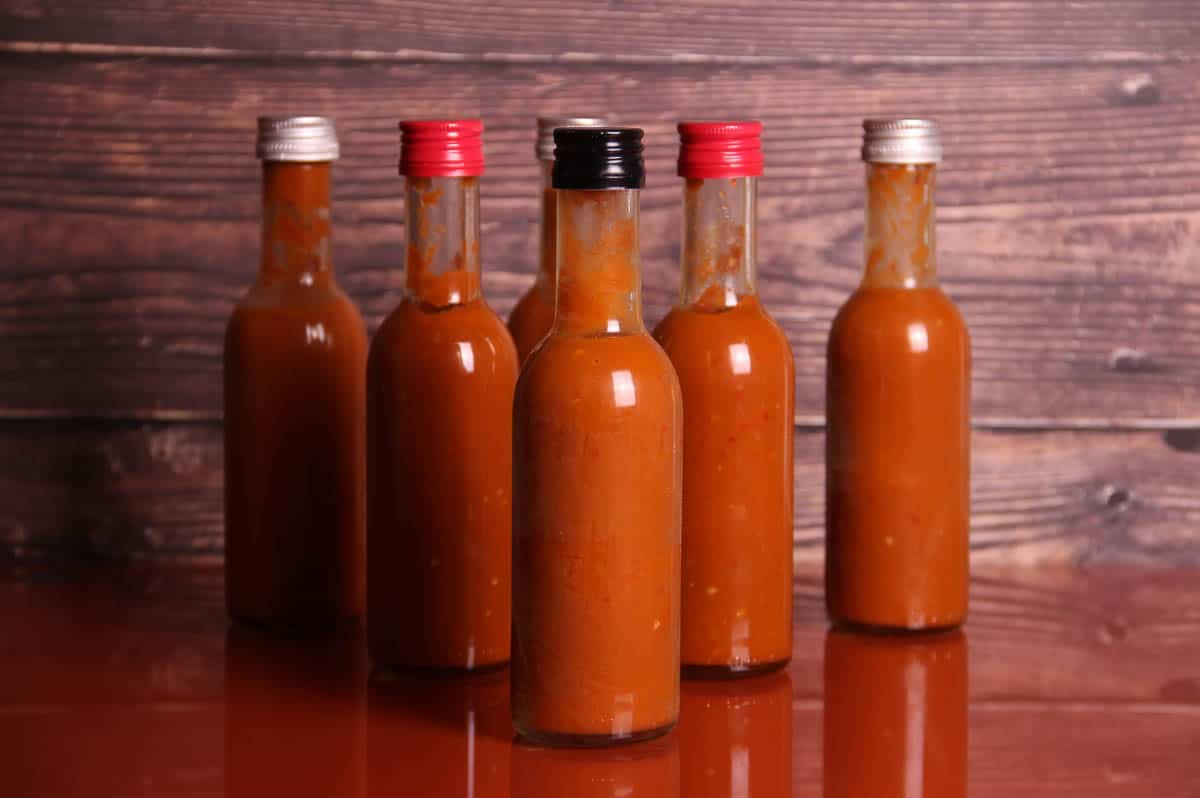
Serrano Pepper
This pepper comes from the mountains of Mexico. It is about five times hotter than a jalapeno. They range from 10,000 to 23,000 on the Scoville scale.
Serrano Peppers have a spicy but fresh flavor. They are very popular in Mexican cuisine. When substituting this type of pepper, plan for one chopped, seeded, and deveined serrano to equal ¼ teaspoon of red pepper flakes.
Try Serrano Pepper for a great substitute for chili flakes in fresh dishes such as salsas or sauces.
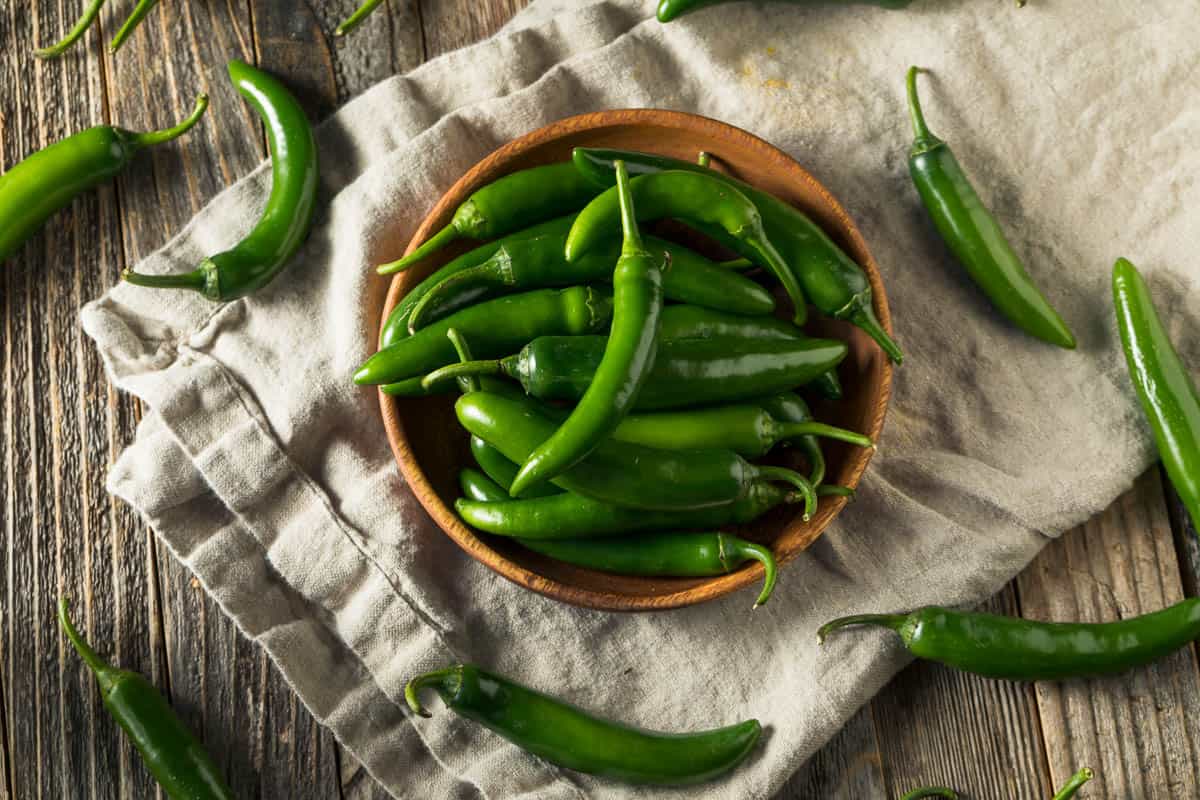
Chipotle Powder
Chipotle powder is made from dried and smoked red jalapeno peppers. It is also called chipotle peppers. They help to create many loved spicy foods in Mexican and Southwestern cuisine.
It has a smokey taste and unique flavor due to the smoking process. Chipotle powder is mildly spicy ranking about 2,500 to 8,000 SHU.
Chipotle powder is a good alternative to chili flakes as it will bring in a similar color and not too spicy of a flavor. A good ratio to use Chipotle Powder is 2 teaspoons of powder for every one teaspoon of chili flakes. It is a great backup to sprinkle on pizza or salads.
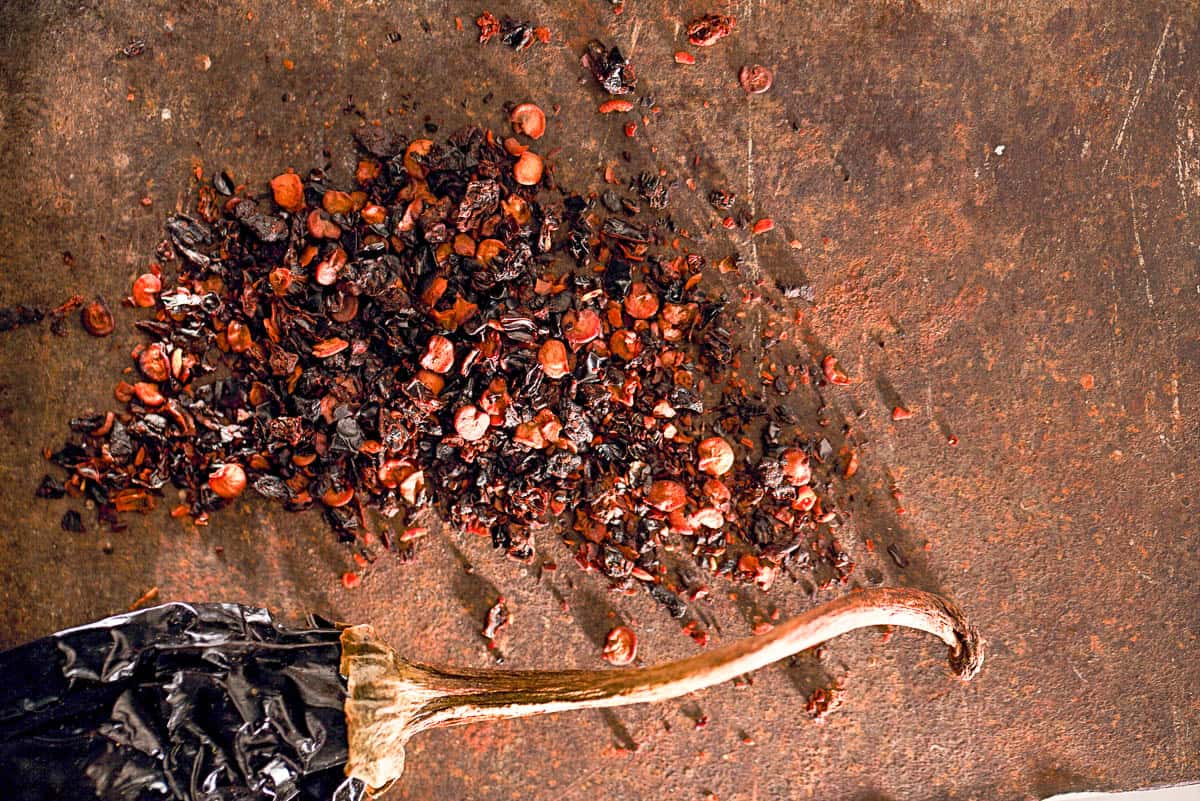
Chile de Arbol Powder
Ground De Arbol Chiles make up this powder. It has a similar taste to that of red bell peppers. It also offers an earthy flavor. De Arbol chilies maintain their bright red color even through the drying process.
Chile de Arbol ranges from 20,000 to 60,000 on the Scoville scale. This pepper powder is a good substitute for chili flakes.
But, because it has such a wide range of heat, start with ½ teaspoon of Chile de Arbol power for every 1 teaspoon of Chili Flakes. It is similar in spiciness to cayenne. You can add more powder as needed.
This is a popular spice used in Mexico, China, and the Caribbean. It is an excellent substitute option for chili soups, salsas, or meat marinades.
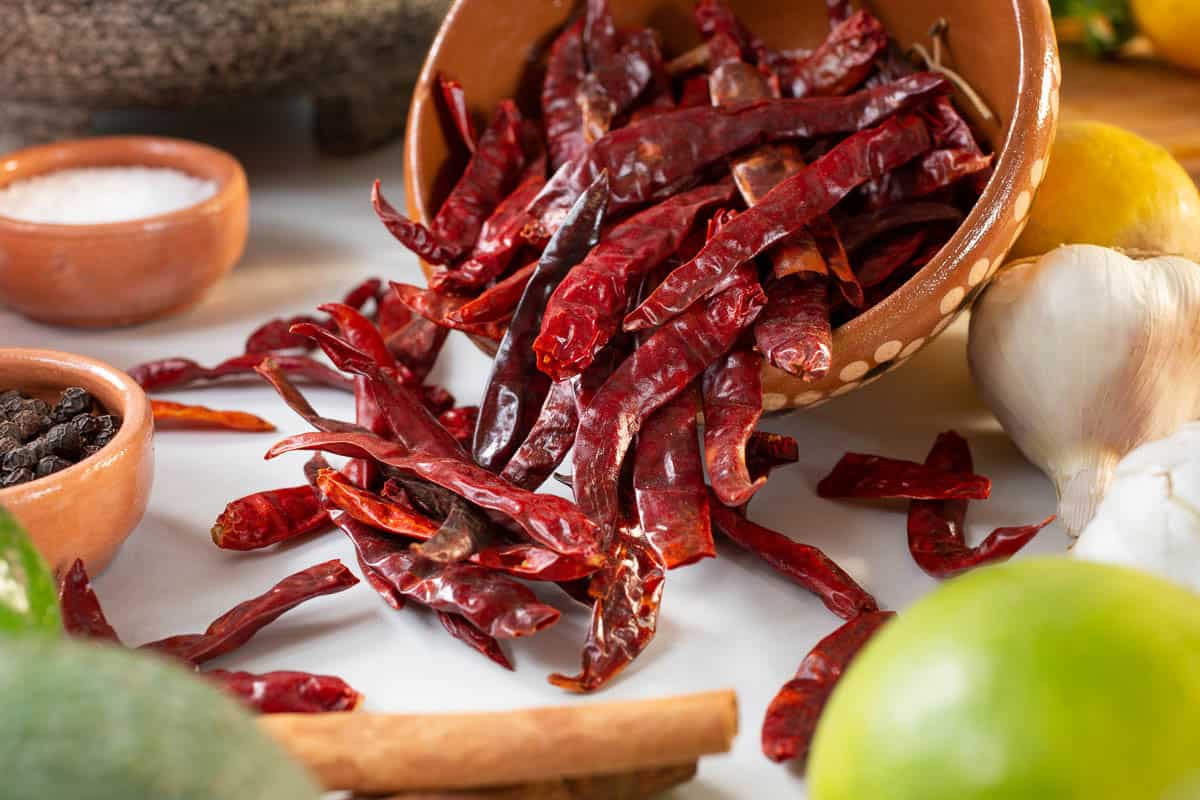
Habanero Pepper
The South American Habenero pepper is a common ingredient in many chefs' kitchens. It is one of the hottest peppers.
Surprisingly, it has a fruity flavor that still gives a high level of heat. The habanero is usually a red chili pepper but also can be orange, green, yellow, or even purple.
If you aren’t scared of hot peppers, habanero is one of the best substitutes for chili flakes in its ground version.
But, keep in mind the habanero pepper used to be the world's hottest chili pepper. It is ranked 100,000 to 350,000 SHU. Habanero can be a good option in small quantities.
Try a small amount of ground habanero as a replacement for chili flakes in tacos with fruit salsa. The fruity flavor and spice will give you a hot flavor without being overpowering.
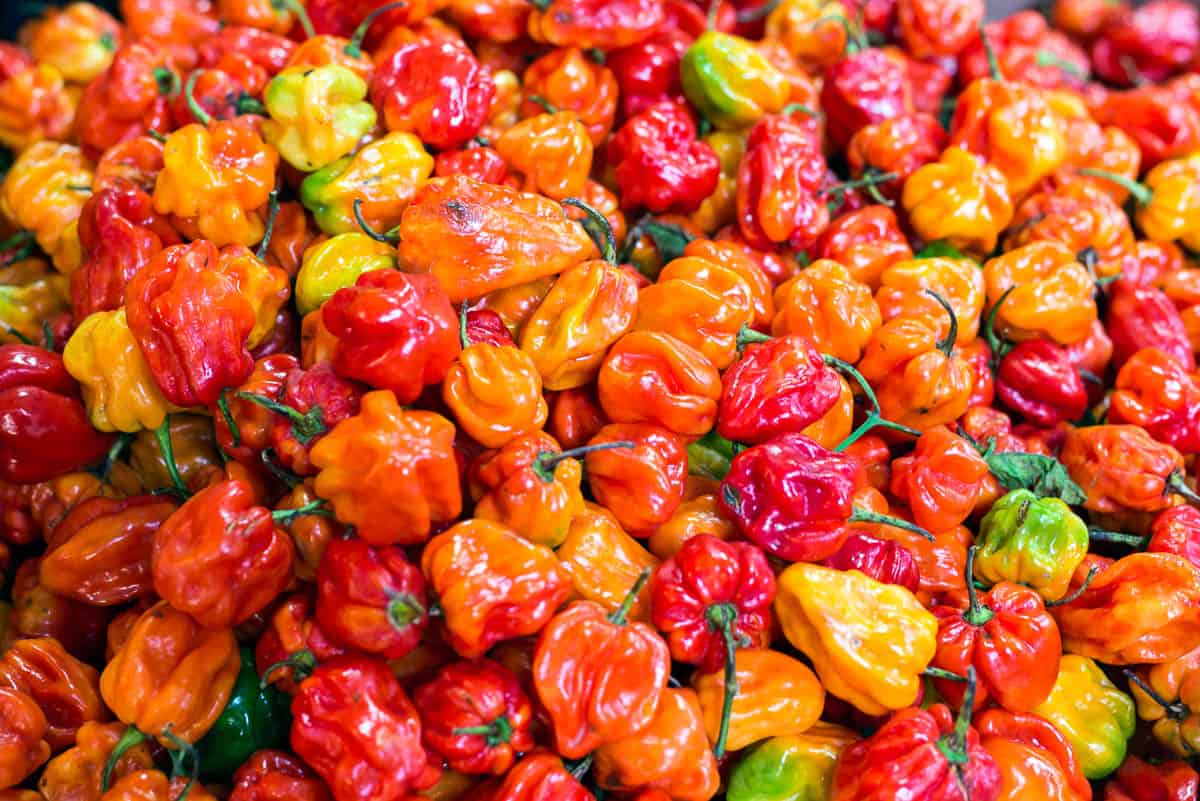
Summing up the Spice
Luckily, most of these substitutes are available in grocery stores if you don’t already have them. When you are missing an essential ingredient such as chili flakes for your well-planned meal, finding a replacement isn’t hard.
Adding chili peppers can provide great flavor and texture compared to using simple ingredients such as black pepper. Each of these substitutions will give you a great heat profile for your next meal.
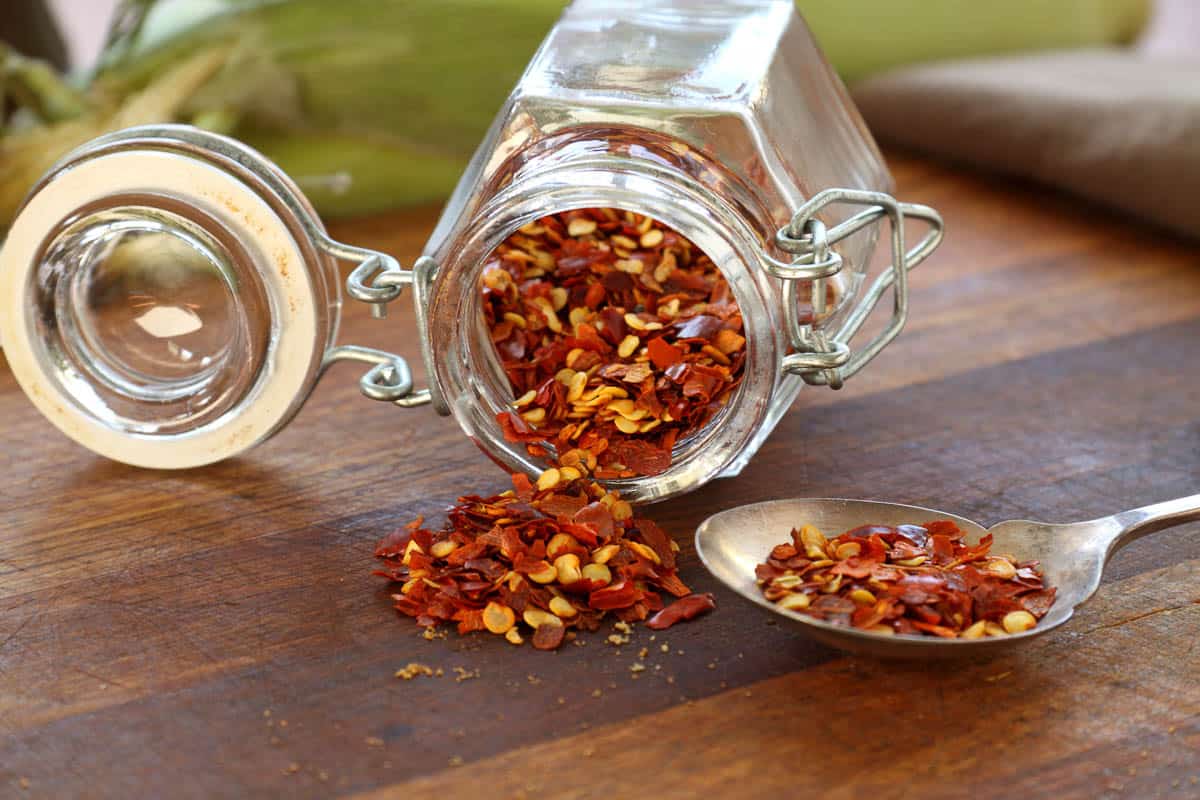
Do you have any other tried and true substitution recommendations? Please let me know in the comments!


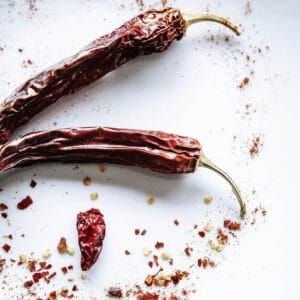
Ayako Journey
Hi there! I simply would like to give you a huge thumbs up for your excellent info you have got right here on this post. I will be coming back to your site for more soon.